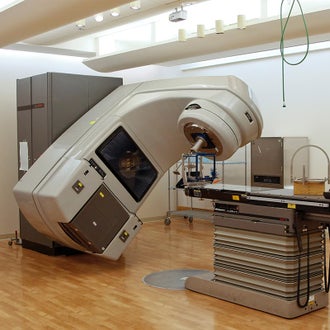I heard that applying stereotactic radiosurgery to benign tumours may result in those tumours becoming malignant. What are the risks involved in stereotactic radiosurgery?"
Stereotactic radiosurgery (SRS) is very precise radiation therapy (radiotherapy) that allows a high dose of radiation to be delivered to a brain tumour (benign or malignant) while minimising radiation to surrounding normal tissues. Radiation therapy may be the most appropriate treatment for a tumour, but there is also a risk that damage to DNA might increase the risk of another cancer developing in the long-term. This risk should be discussed with the treating specialist, who can help to explain this according to the circumstances of the individual patient involved, as other treatment options also carry potential risks.
There have been reports of patients treated with SRS for benign (non-cancerous) brain tumours who later developed a separate cancer that might have been caused by the radiation. In 2014, researchers searched the global medical literature and found a total of 36 reported cases. Given that an estimated 80,000 people worldwide have received SRS for benign disease 15 years ago or more, the researchers calculated that the average patient had a 1/1000 – 1/2000 risk of SRS causing a secondary cancer 15 years after treatment. A UK study also found people who had had SRS had no higher risk of developing a central nervous system cancer than people in the general population.

